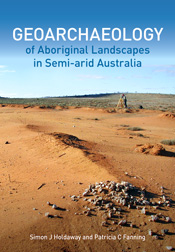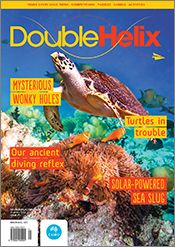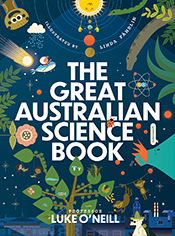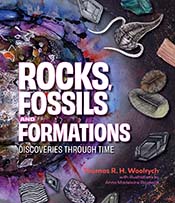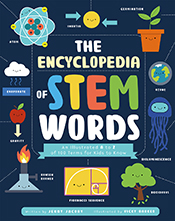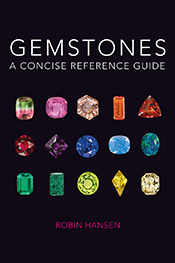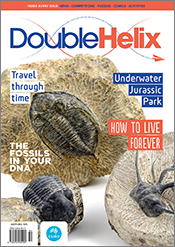Geoarchaeology of Aboriginal Landscapes in Semi-arid Australia
By: Simon J Holdaway, Patricia C Fanning
Examines the ways in which Aboriginal people interacted with their environment in the past at Fowlers Gap Station.
This book provides readers with a unique understanding of the ways in which Aboriginal people interacted with their environment in the past at one particular location in western New South Wales. It also provides a statement showing how geoarchaeology should be conducted in a wide range of locations throughout Australia. + Full description
One of the key difficulties faced by all those interested in the interaction between humans and their environment in the past is the complex array of processes acting over different spatial and temporal scales. The authors take account of this complexity by integrating three key areas of study – geomorphology, geochronology and archaeology – applied at a landscape scale, with the intention of understanding the record of how Australian Aboriginal people interacted with the environment through time and across space.
This analysis is based on the results of archaeological research conducted at the University of New South Wales Fowlers Gap Arid Zone Research Station between 1999 and 2002 as part of the Western New South Wales Archaeology Program. The interdisciplinary geoarchaeological program was targeted at expanding the potential offered by archaeological deposits in western New South Wales, Australia.
The book contains six chapters: the first two introduce the study area, then three data analysis chapters deal in turn with the geomorphology, geochronology and archaeology of Fowlers Gap Station. A final chapter considers the results in relation to the history of Aboriginal occupation of Fowlers Gap Station, as well as the insights they provide into Aboriginal ways of life more generally. Analyses are well illustrated through the tabulation of results and the use of figures created through Geographic Information System software.
Winner of the 2015 Australian Archaeology Association John Mulvaney Book Award
Cultural sensitivity
Readers are warned that there may be words, descriptions and terms used or referenced in this book that are culturally sensitive, and which might not normally be used in certain public or community contexts. While this information may not reflect current understanding, it is provided by the author in a historical context.
News
This title is no longer available in print format, but can still be purchased as an eBook.
Reviews
"There are few less generous landscapes than Fowlers Gap in far western New South Wales, yet archaeologist Simon Holdaway and geomorphologist Patricia Fanning have managed to produce a compelling study of its ancient past in Geoarchaeology of Aboriginal Landscapes in Semi-arid Australia."
Billy Griffiths, Historical Records of Australian Science, vol. 25, no.2, pp. 360-361
"Students and professionals looking to make inferences about the past behaviour of people from the archaeological remains in the arid and semi-arid zones will benefit from considering the important issues discussed"
Jacqui Tumney, Archaeology in Oceania, 2014, pp. 165-166
"There are therefore lessons in this impressive and well presented work for all archaeologists"
Michael J. Rowland, Historic Environment, 2014, Vol. 26, no. 2
Details
ePDF | March 2014ISBN: 9780643108950
Publisher: CSIRO Publishing
Available from eRetailers
ePUB | March 2014
ISBN: 9780643108967
Publisher: CSIRO Publishing
Available from eRetailers
Features
- Integrates geochronology, geomorphology and archaeology - applied at a landscape scale
- Provides a critique of the current approaches to archaeological survey in Australia
- Describes methods for understanding the raw material selection and technology of flake production
- Shows how this geoarchaeological approach to studying the Australian arid zone can be related to similar approaches worldwide
Contents
AcknowledgementsChapter 1 Geoarchaeology
Chapter 2 Surface Archaeology in the Arid Zone: a Geoarchaeological Framework for Survey and Sampling
Chapter 3 The Surface Archaeological Record at Fowlers Gap: Preservation, Exposure and Visibility
Chapter 4 A Chronology of Aboriginal Landscape Use at Fowlers Gap
Chapter 5 Stone Artefacts and Mobility
Chapter 6 Synthesis: Spatial and Temporal Patterns of Landscape Use by Aboriginal People
Authors
Simon Holdaway is Professor of Archaeology in the Department of Anthropology at The University of Auckland. He has research interests in human–environment interactions, geoarchaeology, landscape archaeology and stone artefacts. He has researched in south-west Tasmania, western New South Wales and Cape York in Australia, the Fayum region of Egypt and in Taranaki, New Zealand.Patricia (Trish) Fanning is a geomorphologist based in the Graduate School of the Environment at Macquarie University, with research interests in landscape evolution, environmental change and human–environment interactions in arid, semi-arid and tropical savannah landscapes. Her Master of Science degree research was based at the University of New South Wales Fowlers Gap Arid Zone Research Station, where she first observed impacts of geomorphic processes on the preservation of the traces of prior Aboriginal occupation. Her PhD research focused on developing a new geoarchaeological approach to understanding human–environment interactions in the past. Since 1995, she has co-directed the Western New South Wales Archaeology Program with archaeologist Professor Simon Holdaway.

